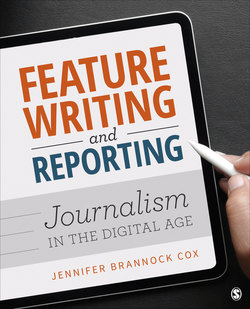Читать книгу Feature Writing and Reporting - Jennifer Brannock Cox - Страница 6
На сайте Литреса книга снята с продажи.
Preface
ОглавлениеMy first job in a newsroom was not glamorous. I worked for a major metropolitan newspaper, where I answered phone calls from irate subscribers and stained my clothes with fresh ink every night while collecting papers hot off the press to distribute to the “real reporters” in the newsroom. I slowly earned my opportunity to build clips by sifting through the journalists’ mail as I sorted it daily, scouring press releases and letters from readers for freelance stories they didn’t want. As a recent college graduate, I was a nobody, paying my dues until I gathered enough experience for my voice to matter.
The scene for journalists entering newsrooms today is dramatically different. The old gatekeeper and agenda-setting roles journalists once occupied are long gone, and the industry is experiencing a time of great upheaval as news organizations look for ways not only to prosper but also to stay afloat. Because of buyouts and slimmer employee rosters, newsroom managers are leaning more heavily on fledgling reporters to help them navigate this period of vast change. From chaos comes opportunity. Today’s graduates have an unprecedented path to becoming the leaders who determine the future of journalism for us all.
The purpose of this book is to provide you with a solid foundation for feature writing based on traditional practices as well as emerging and audience-centered storytelling strategies. In the Digital Age, the audience is no longer merely a passive consumer of news. Our readers and viewers crave content that is engaging, interactive and geared toward managing their daily lives and appealing to their interests. Feature storytelling can help reporters satisfy these needs, creating loyal, active audiences that can sustain news organizations for years to come.
This book will explain the opportunities and challenges media practitioners face today as they strive to connect with and stay relevant to a digital audience. You will also learn traditional feature techniques to help you tell stories with impact and appeal. Additionally, you will learn to adapt to evolving audience needs and expectations with new methods of storytelling that blend meaningful and engaging reporting (the old school) with multimedia and social features (the new school). Journalists need all these ingredients to be successful in the field today. Each chapter of this book is aimed at furnishing tools for your journalistic toolbox that will enable you to adapt and succeed as a storyteller in this ever-evolving Digital Age.
